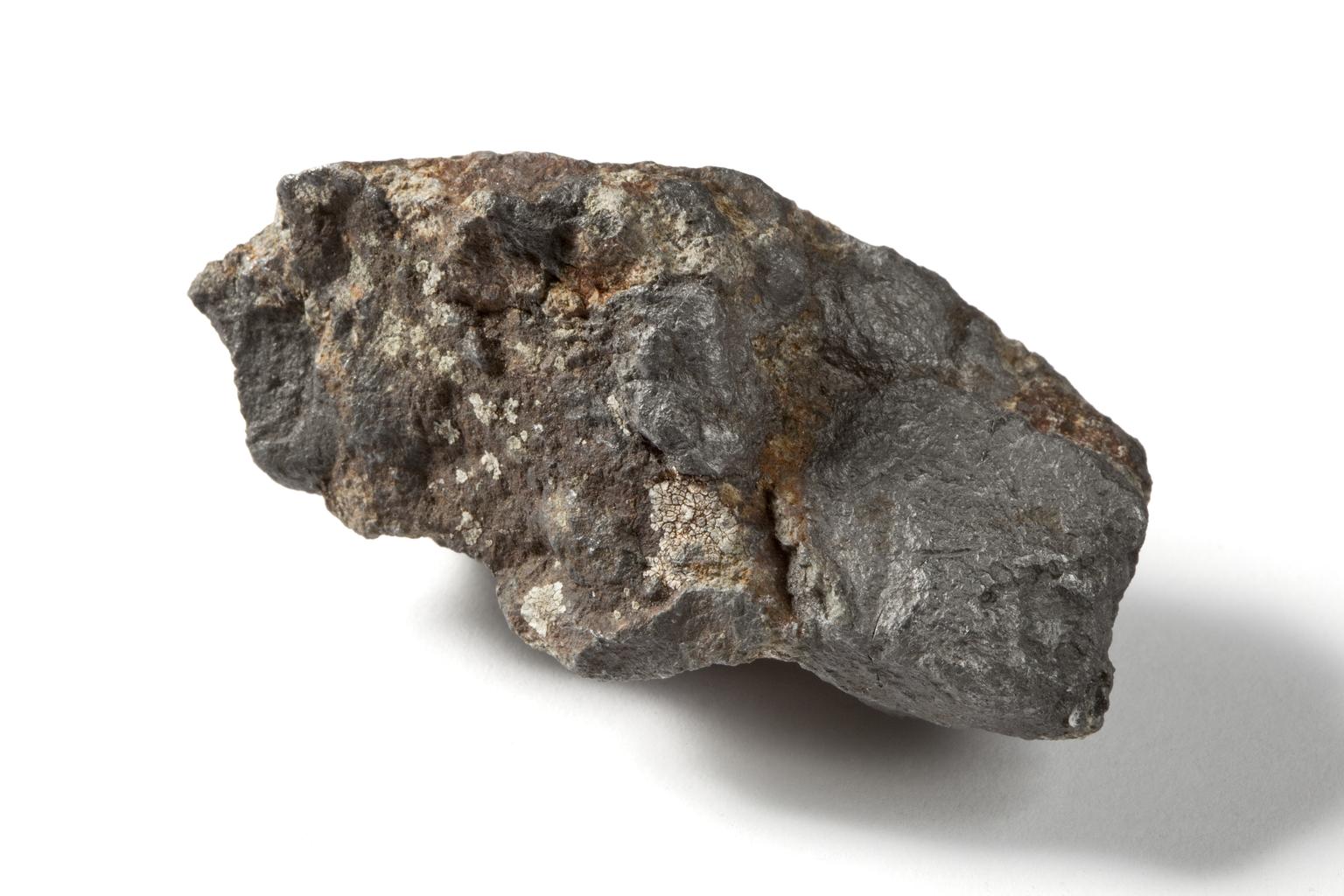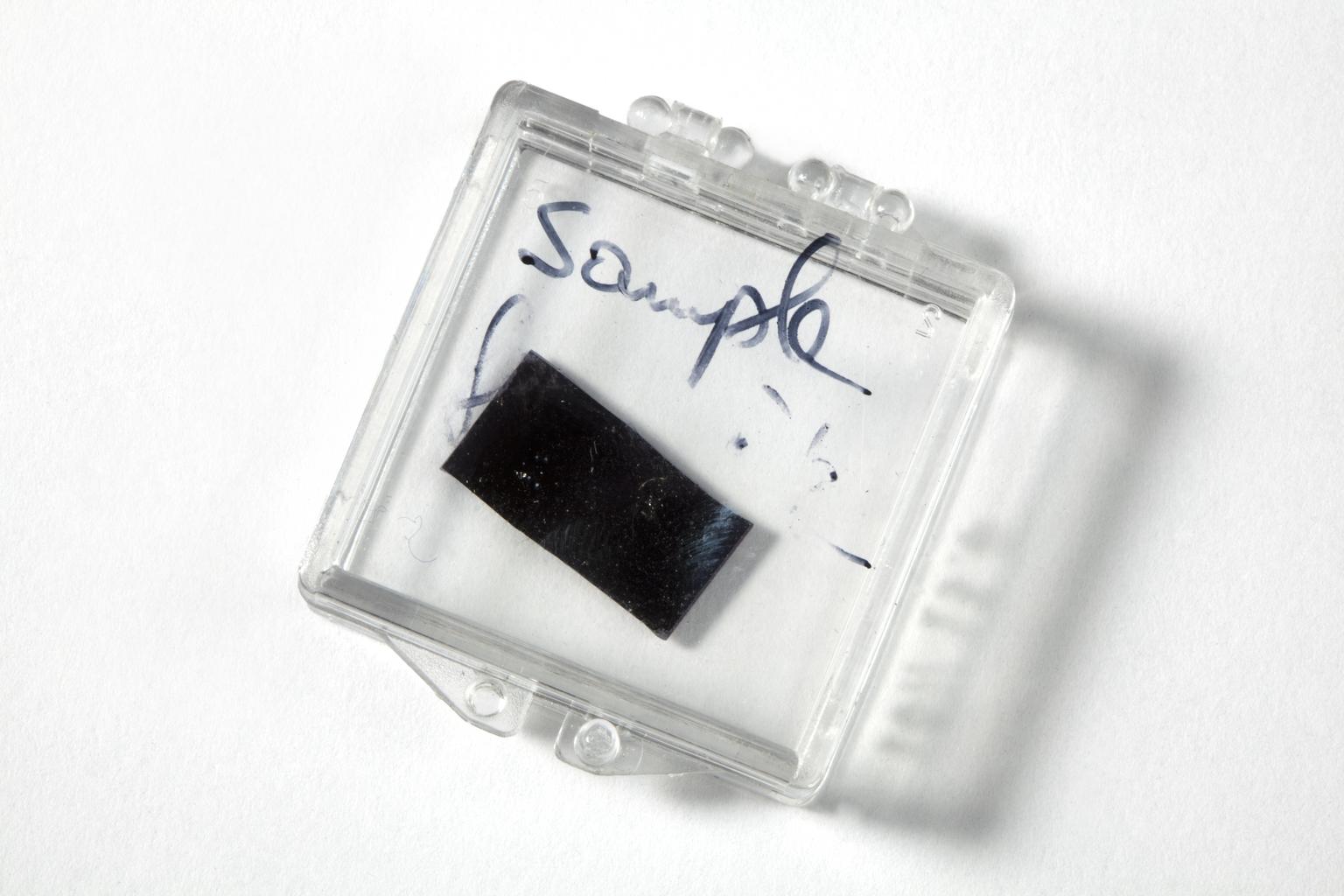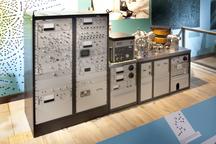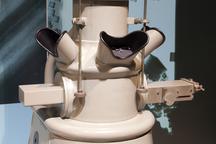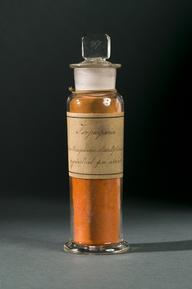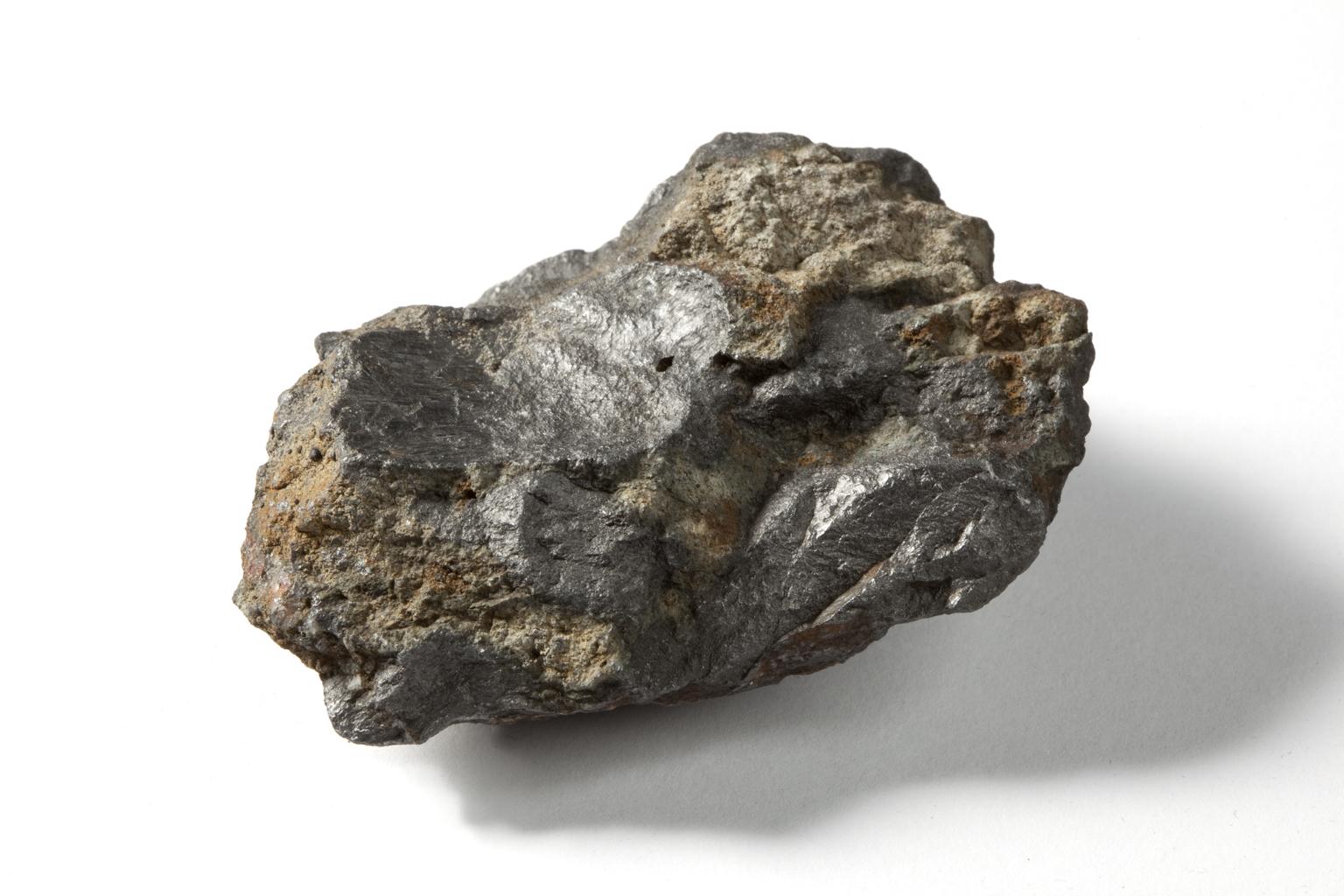
Graphite collected from the Lake District by Konstantin Novoselov
Graphite sample from Keswick, Cumbria. In 2004 Andre Geim and Konstantin (Kostya) Novoselov found a reliable and cheap method for obtaining monolayer graphene flakes from graphite, using scotch tape, which led to groundbreaking experiments for which the pair were awarded the Nobel Prize for Physics in 2010. After isolating graphene, Kostya Novoselov became interested in the history of graphite. He picked up this piece of graphite when walking in the hills near Borrowdale in the Lake District.

